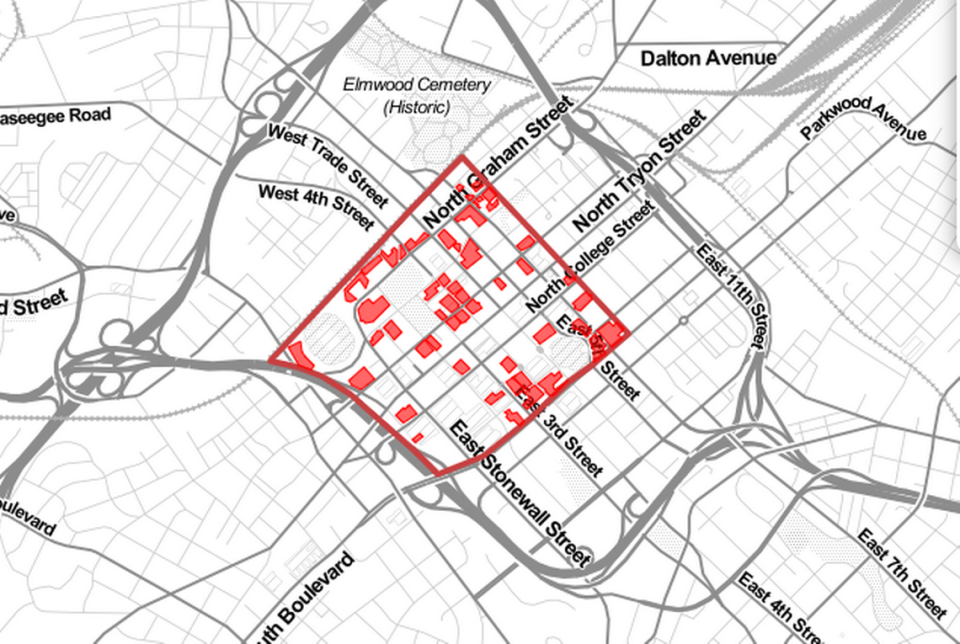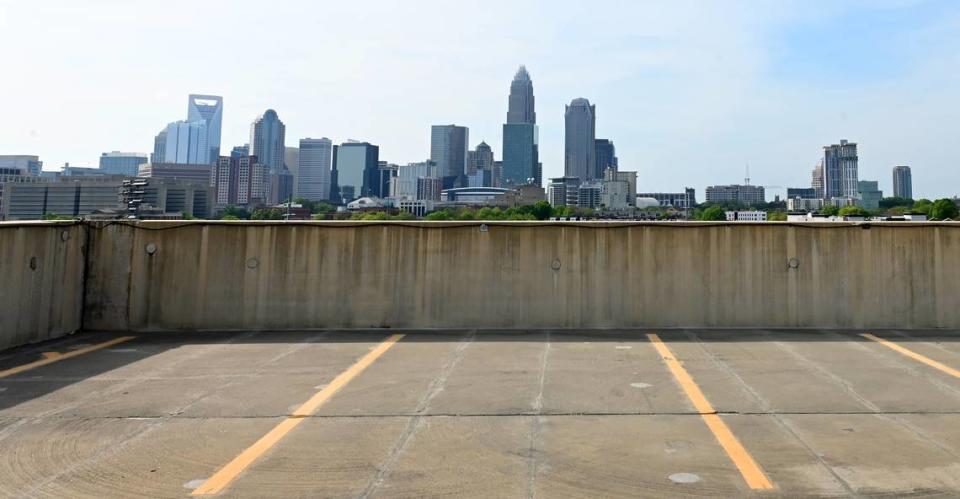Charlotte wants to be a more walkable city. New parking map shows what could hamper that.
As Charlotte aims to become a more walkable, dense city there’s one policy that can undermine those goals: government-mandated parking regulations.
That’s the stance of the Parking Reform Network, a national nonprofit out of Portland that works to educate organizations and cities about rethinking rules around vehicle parking. The network published a map last month showing how much land the 50 biggest U.S. cities by population — Charlotte included — dedicate to parking. The map only focused on each city’s center, business district.
While Charlotte scored in the middle of the pack at 27th, the map raises questions about the direction the city is headed in terms of building less car-centric neighborhoods.
Cities across the country have been eliminating parking requirements, including in Raleigh where mandates for most land uses are no longer required. Proponents of eliminating parking requirements point to the expense that comes with building garages and how much space lots take up.
In its newly-adopted development rule book, Charlotte set parking space minimums and maximums for various uses, everything from car washes to restaurants and apartment complexes.
A single-family home in a neighborhood zoned district requires one space per unit. For a gas station, one space is required per pump island plus one space per every 1,000 square feet of retail in a neighborhood district. Such minimums largely disappear in denser parts of the city like transit-oriented development districts.
Some city leaders argue parking mandates can go against certain long-term goals like creating walkable areas and reducing traffic fatalities.

Where Charlotte ranks on parking map
Arlington, Texas, scored the worst on the Parking Reform Network’s list, with 42% of its center city district devoted to parking. San Francisco had the best parking score, with 4% of its center city dedicated to parking.
Charlotte has about 18% of its center city area dedicated to parking, according to the network. The network looked at a boundary inside the Interstate 277 loop, from South Caldwell Street up to East Seventh Street and north of North Graham Street.
The group is trying to ask what justifies a prescribed amount of parking, the network’s president, Tony Jordan, told The Charlotte Observer. Decisions of how much parking is tied to any given development or land use are best left up to the business owner, developer or property owner.
“It’s mostly saying, what is the right amount of parking? And how little can we get away with?” Jordan said.

Running counter to other city policies
The recently-adopted 2040 Comprehensive Plan lays out how Charlotte wants to grow over the coming decades.
One of the goals is creating “10-minute neighborhoods.” That means households should have access to essential amenities and services like food, healthcare or a park within a 10-minute walk, bike or transit trip.
People living in cities with more parking requirements means the housing supply is more restricted and expensive, Jordan said, because costs for a development increase with parking.
Jordan stressed the elimination of parking requirements doesn’t mean there won’t be places to park. Businesses and companies can decide how much they need.
Parking structures also serve to space a city further apart, Jordan said. For visitors who don’t want to drive their cars everywhere, walking can become more difficult to get from point A to point B.
“It’s going to degrade your ability to do multiple things without getting in a car,” he said.
By publishing the map, Jordan hopes to show how much potential cities have if they stop requiring so much parking to be built.
Talks of amending the rule book
One Charlotte leader is on board with less regulation around parking requirements for new development.
Mayor Pro Tem Braxton Winston believes the city should stay out of regulating parking minimums and maximums.
The city needs an overall parking plan — for managing parking in the right-of-ways. A developer, property owner or business owner can decide how much parking they need on site, Winston said in an interview with The Charlotte Observer.
In a tweet on Tuesday, Winston argued requiring a minimum number of parking spaces at places like breweries, bars and nightclubs — places people can go to drink alcohol — go against the city’s goal to eliminate traffic fatalities.
“We should explore policy to eliminate this counterproductive mandate,” the mayor pro tem tweeted.
Its common sense that mandating parking mins for establishments where people go to drink alcohol (like breweries, bars, nightclubs, etc) is counterproductive to #VisionZero goals to eliminate traffic fatalities. We should explore policy to eliminate this counterproductive mandate https://t.co/laXbOESYBE
— Mayor Pro Tem Braxton Winston (He/Him) (@BraxtonWinston) April 4, 2023
Cities are always changing, especially in the more urban and dense parts, Winston said in an interview. He wants to have discussions with the city about a possible amendment to the UDO when it comes to parking requirements.
“If you try to overly prescribe outcomes, it limits the way places can grow,” he said.

